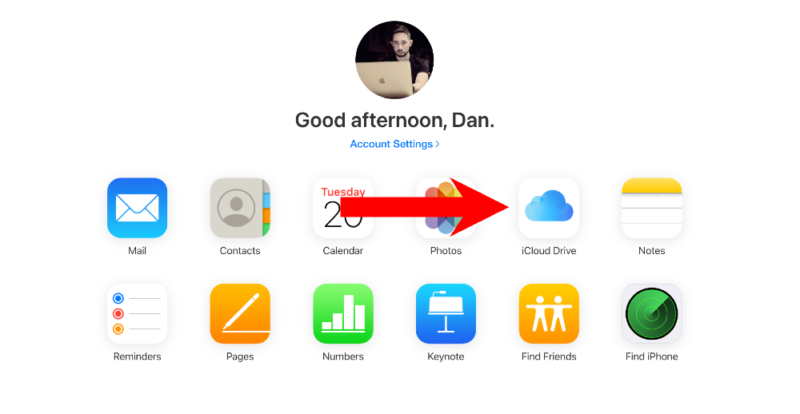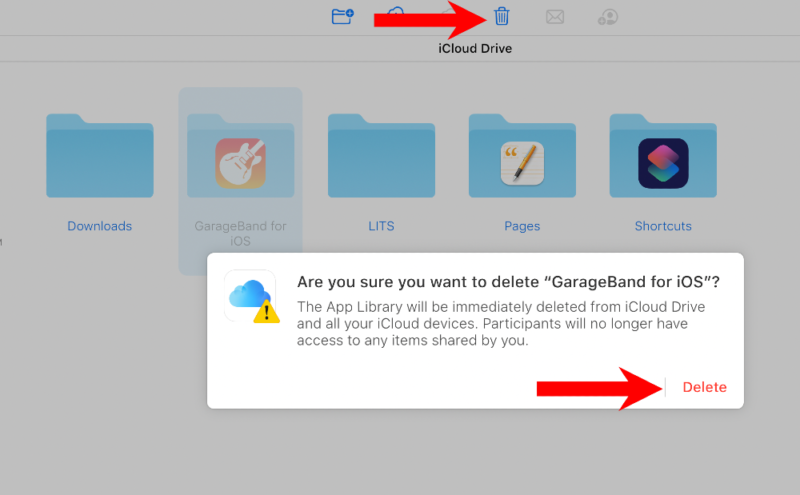Solved: iCloud Storage Full in 2025 (Easy Steps to Get More Space)
Is your iCloud storage full? In this guide, we'll show you how to free up iCloud space for your Apple device, and we’ll share some alternative cloud services for backing up your data.
Is your iCloud storage full? Are you worried about how to recover storage space? If you don’t want to pay for more storage, and need useful tips to free up space, we’ll give you that and more in this easy-to-follow, step-by-step guide.
One of the perks of using iCloud to backup your iPhone or iPad is how seamless and simple it is to select individual apps to backup automatically. For example, if you take a photo, rather than worrying about uploading it to the cloud, you can program iCloud to do it automatically. This is a great feature that alleviates the need to constantly upload your data.
Sadly, it has its drawbacks. The 5GB of free iCloud storage is nothing compared to the 15GB given by Google Drive (read our Google Drive review) or 20GB given by MEGA (read our MEGA review). Also, iCloud for desktop isn’t as user-friendly and full featured as some of the best cloud storage services in the space.
However, for most Apple users, iCloud is the most accessible option and offers enough of what most people need. So if you’re getting the dreaded “iCloud storage is full” notification, fear not, because we’re here to help you free up iCloud storage space with some short, easy steps.
10,000+ Trust Our Free Cloud Storage Tips. Join Today!
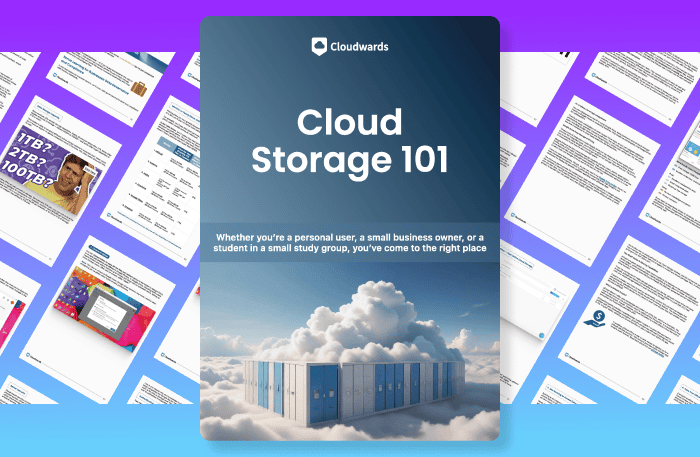
- Demystify cloud storage terminology and key concepts in plain language
- Discover easy-to-implement techniques to securely backup and sync your data across devices
- Learn money-saving strategies to optimize your cloud storage costs and usage
Plus, if you need it, we have a guide on how to delete duplicate photos on iPhone.
-
02/07/2025 Facts checked
We added more information about our recommended iCloud storage alternatives and updated our how-to steps with more details.
-
05/11/2025 Facts checked
We expanded on the key features of our recommended iCloud alternatives.
-
06/05/2025 Facts checked
Added video guide on how to free up iPhone and iCloud storage.
Why Is My Apple iCloud Storage Full?
Your Apple iCloud Storage might be full due to emails with large attachments, high resolution images and videos or too many attachments sent in the messages app. All of these could be synced to iCloud and begin to eat up your available storage without you realizing.
What to Do When iCloud Storage Is Full
If you run out of storage space, there are a few ways to fix it. Here are your two options.
- A) Buy More Space
The first is to increase the amount of storage you have, if you haven’t already. You’ll need to pay for extra storage, which some of you may not want to do.
- B) Delete Files
The next option is to manually free up space by deleting photos, videos, and any unwanted files.
We will show you how to do both options, breaking down each into smaller steps when necessary.
You can also check the “recommendations” section in your iCloud settings, where Apple automatically suggests specific actions to free up storage based on your usage patterns.
You can do most of the steps below on either your iPhone or iPad; however, some steps can only be performed on a Mac or PC.
Option A: How to Get More iCloud Storage? Buy More Space
Getting more iCloud storage space is straightforward and can be done through your iPhone or iPad.
- Manage Storage in iCloud
To get more storage, select “manage storage” in the iCloud settings.
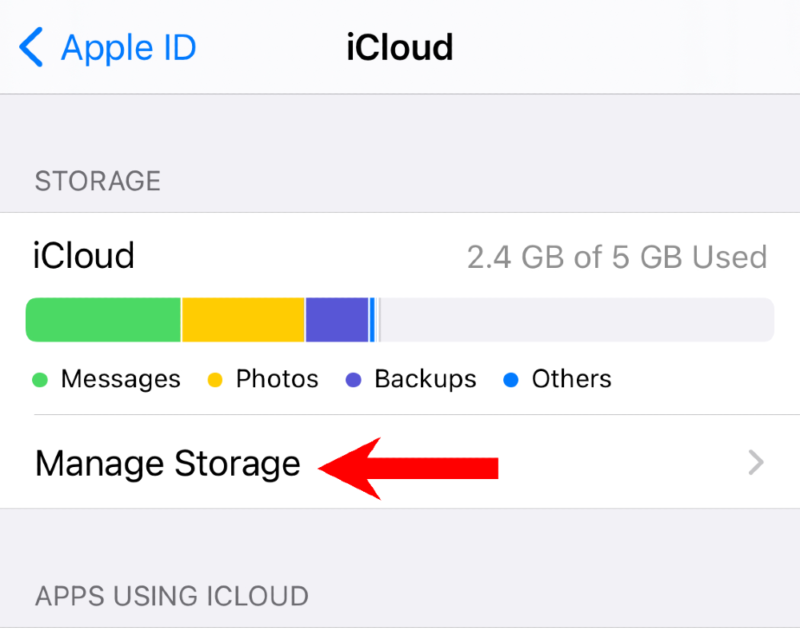
- Upgrade to a Larger iCloud Storage Plan
Now, select “change storage plan.” Here you will be presented with a selection of upgrade options ranging from 50GB to 2TB of storage. Select the option that’s best for you and tap “buy” in the top right-hand corner.
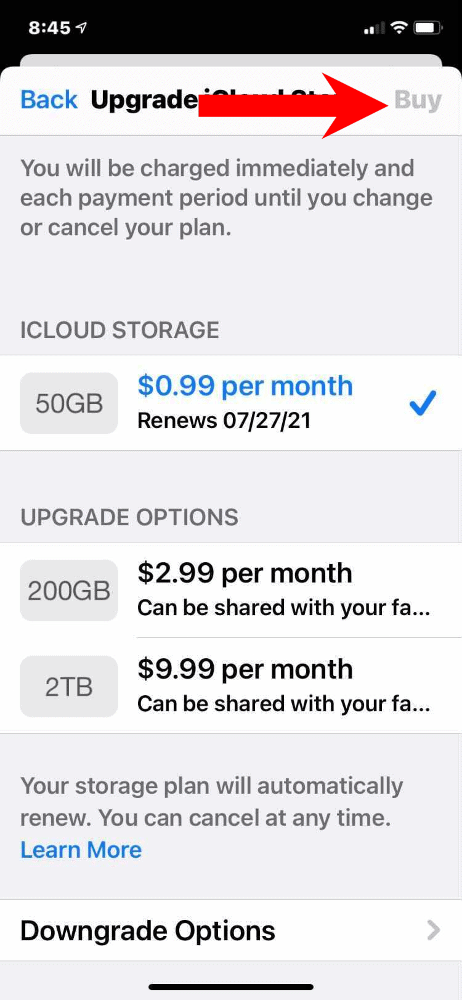
Option B: Get More iCloud Space By Deleting Files
Now let’s dive into the different ways you can clear up some extra iCloud storage space, including:
- Deleting old backups
- Deleting messages
- Removing duplicate or unwanted photos
- Deleting emails
How to Delete Old Backups
If you backup your iPhone to iCloud, great — you have the option to recover your files should anything happen to your device. However, if you would like to restore iCloud backups to a new device or have made multiple backups, there’s a good chance you don’t need most of them. In this case, it’s a good idea to delete old, unwanted backups.
- Locate iCloud in “Settings”
Open “settings,” select your name and then tap “iCloud.”
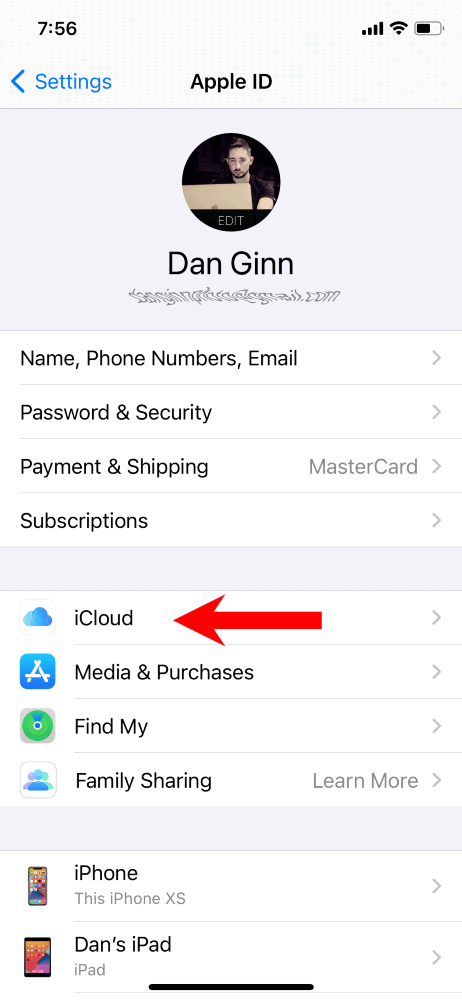
- Select “Manage Storage” and Locate Backups
Next, select “manage storage.” Here you will see a range of data that is backed up to your iCloud account. Tap “backups” to move to the next step.
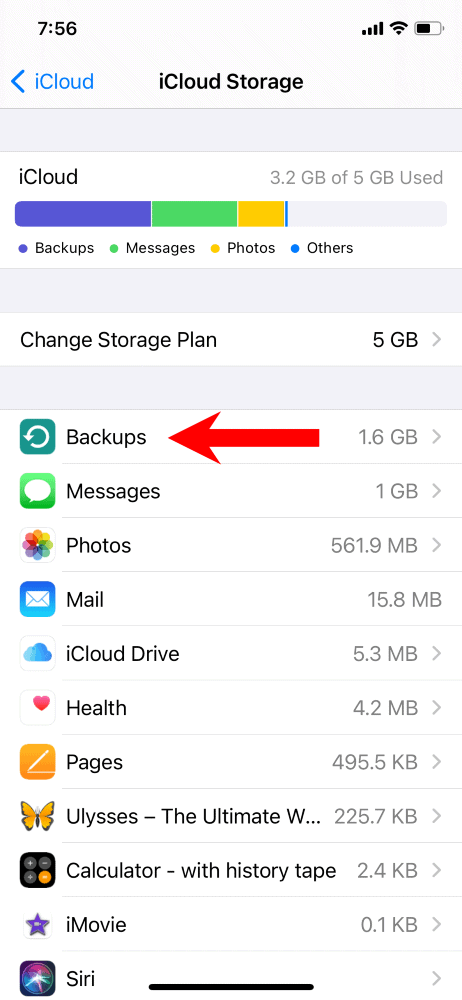
- Select the Backups You No Longer Need
Now you will see a list of all the device backups you have made to iCloud. Identify which ones are no longer useful and select them. Tap “delete backup” to remove the backup from iCloud.
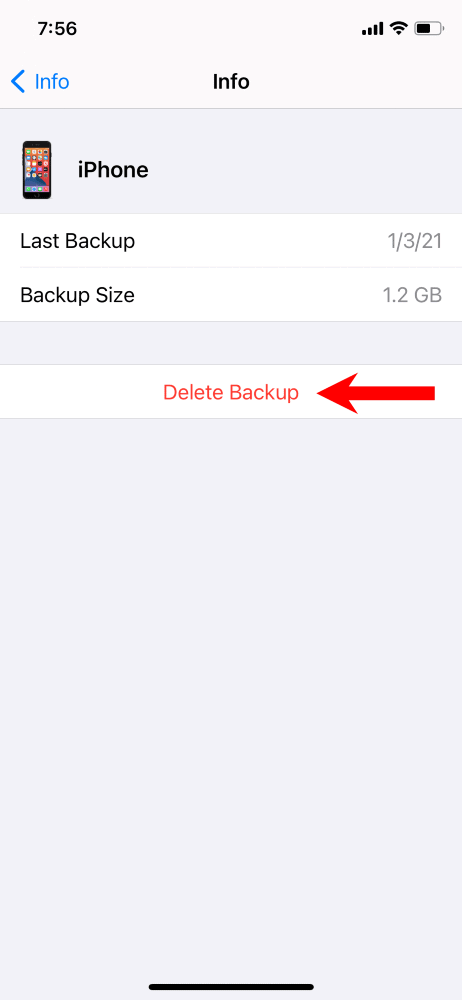
How to Delete Messages
Backing up your messages is a fantastic way to ensure that you don’t lose any important conversations. The only drawback is that if you send lots of photos and videos through the messages app, they too will be stored on iCloud.
The Messages app in iCloud syncs your entire message history across devices, but this can consume significant storage. Consider disabling this feature if you don’t need historical messages.
If you haven’t set your message app to “low quality image mode” (settings > messages > toggle on “low quality image mode”), then you’ll automatically send high-resolution images to your contacts by default. This means you’ll have larger files taking up space in iCloud. You can free up space by doing the following steps.
- Locate Messages in iCloud
As with backups, locate “messages” in the “manage storage” section of your iCloud settings.
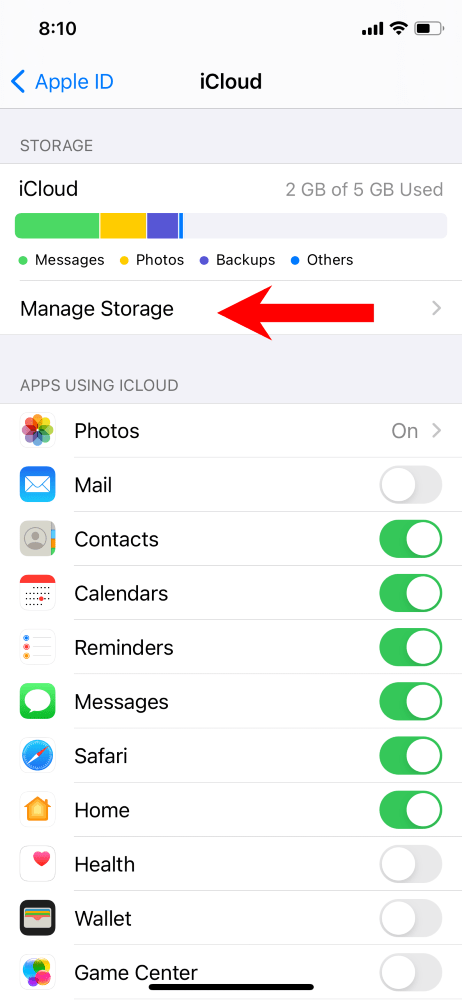
- Select “Disable & Delete”
Select “messages,” then tap “disable & delete.” Doing this will ensure that future messages won’t be stored on your iCloud account, and all current messages will be deleted (you have 30 days to download current messages).
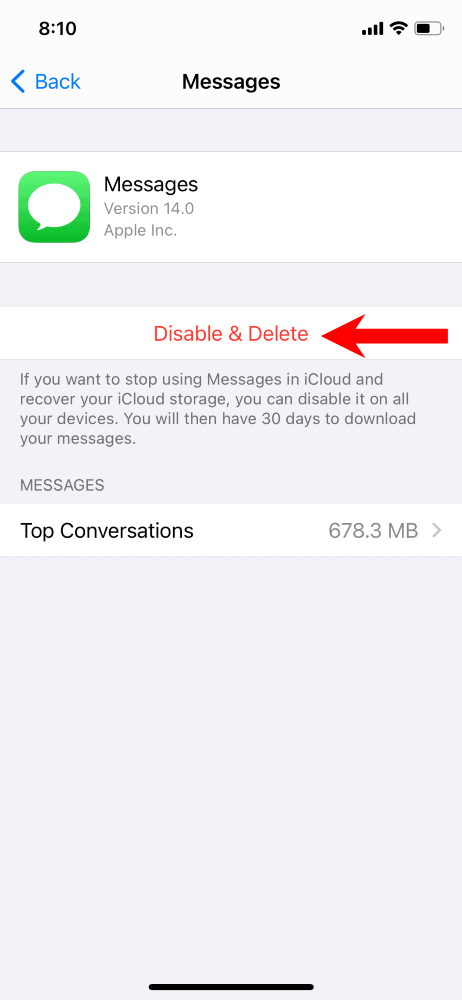
- Select Individual Messages
If you don’t want to delete all your messages or stop backing them up, you can delete individual messages. To do this, stay in the “messages” section and select “top conversations.” Review your top conversations to identify message threads consuming the most storage space, often due to shared media and attachments.
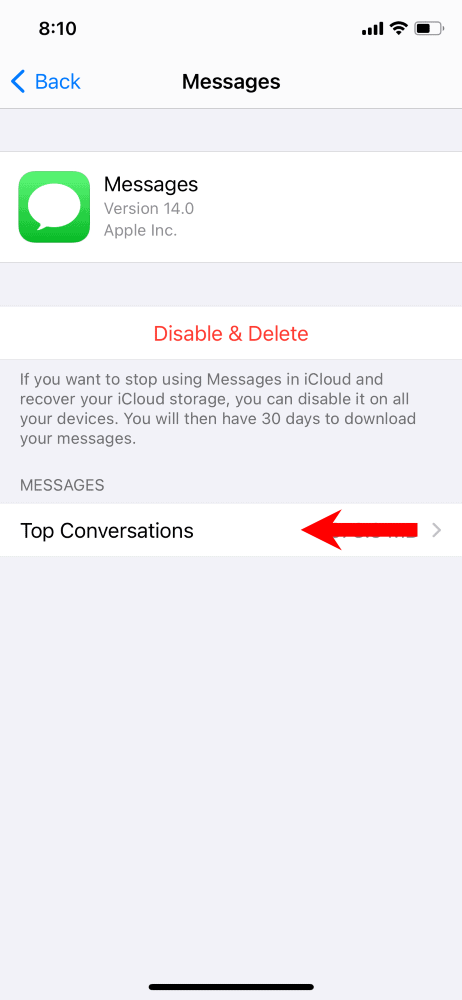
- Delete Selected Messages
Tap “edit,” select the messages you no longer want and press “delete.”
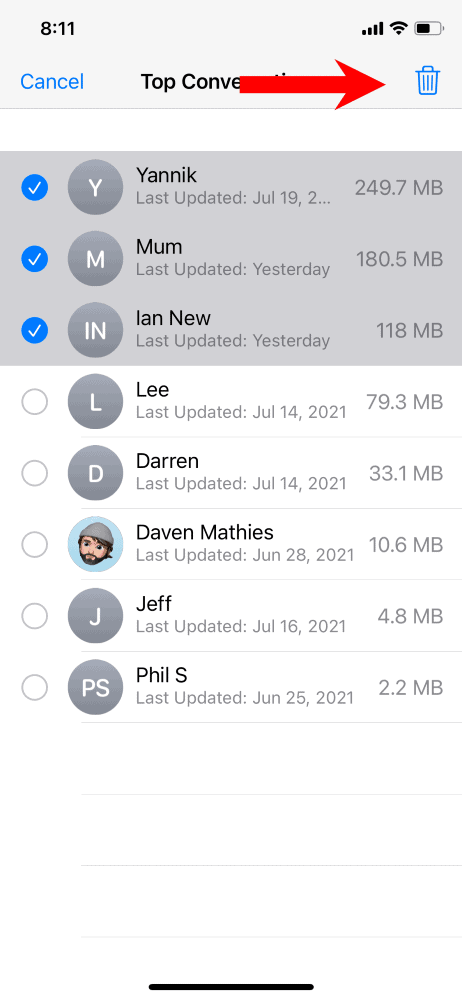
How to Clean up the Photos App
The files in the photos app are likely the biggest contributing factor to running out of iCloud space. We’re sure that if you reviewed your photo library, you would be happy to delete photos you no longer needed. Duplicate photos or images you wish you never took are your first port of call when you want to free up space in your iCloud storage.
Beyond exact duplicates, similar photos — like multiple shots of the same scene or burst photos — can consume significant storage space. Consider using apps like Gemini Photos to identify and remove these similar images, keeping only the best shots from each set.
Unfortunately, you can’t manually delete selected photos on an iOS device when in iCloud. You only have the option to delete all your photos, which we imagine you don’t want to do. To delete selected photos, you will need to visit iCloud on your desktop.
iPhone users can also enable the “optimize storage” feature, which automatically stores full-resolution photos and videos in iCloud while keeping smaller, space-saving versions on your device. In addition, third-party tools like CleanMyPhone can help identify and remove similar photos, screenshots and low-quality images that take up unnecessary iCloud space.
- Log In to iCloud
First, head over to iCloud and log in to your iCloud account using your Apple ID and password.
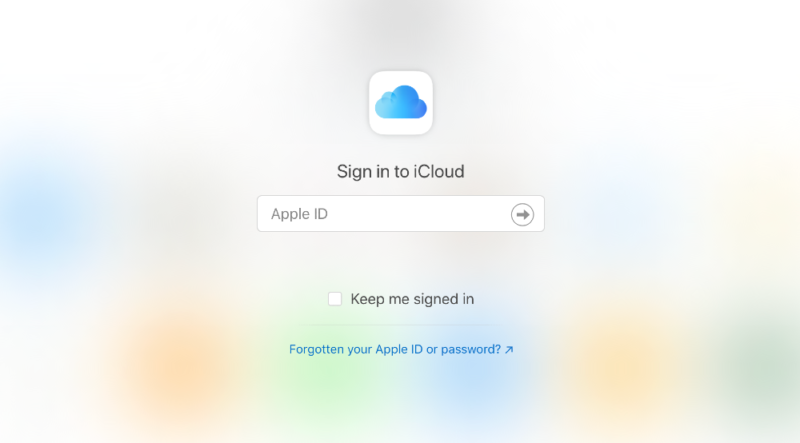
- Select the “Photos” App
Next, select the “photos” app to access the iCloud photo library.
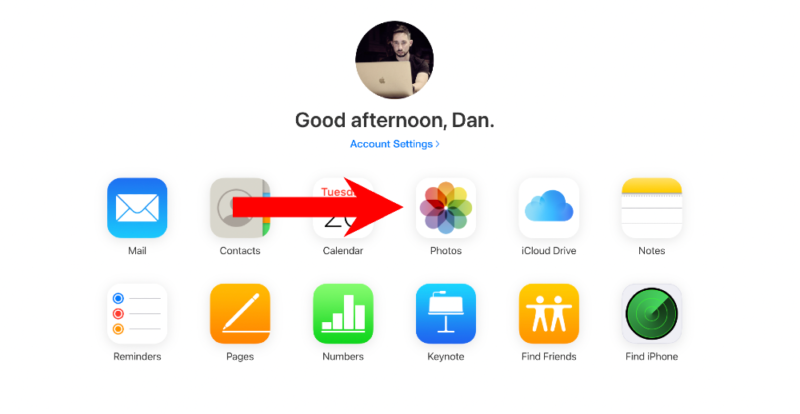
- Manually Select Unwanted Photos
Now that you can see the photos on your iCloud, you can select which images you want to delete. For Mac users, hold “command” and right-click to select multiple photos. You can also select videos in this section. Next, tap “delete” and your photos and videos will be removed from iCloud.
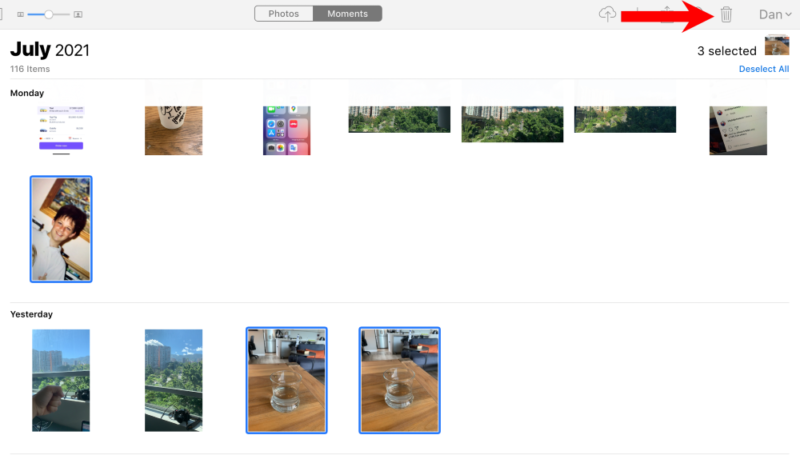
How to Delete iCloud Mail
If you backup your emails to iCloud, it’s a good idea to keep on top of them and delete any that you no longer need. Although tedious, deleting emails from iCloud is easy.
- Open the Mail App and Select “iCloud”
Open “mail” on your iOS device. If you have multiple email accounts, select “iCloud” to open your email.
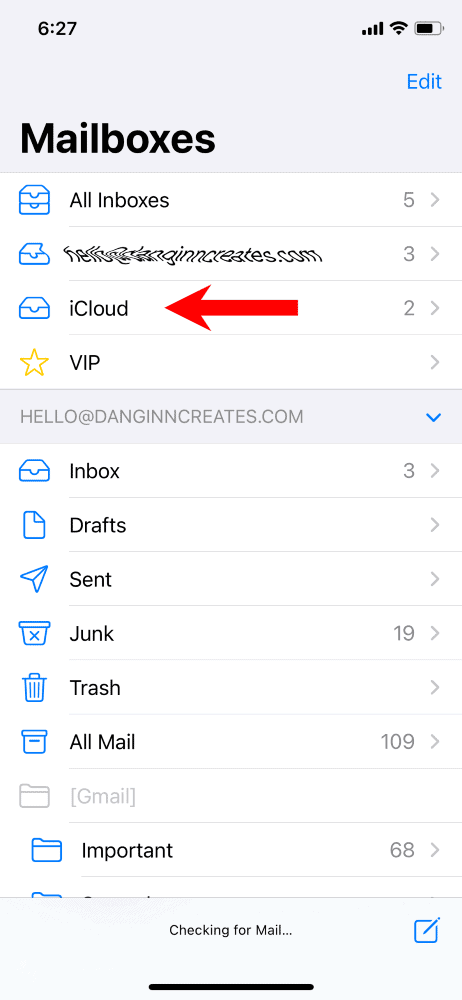
- Click “Edit”
When you can see your iCloud mail, tap “edit” in the top right corner.
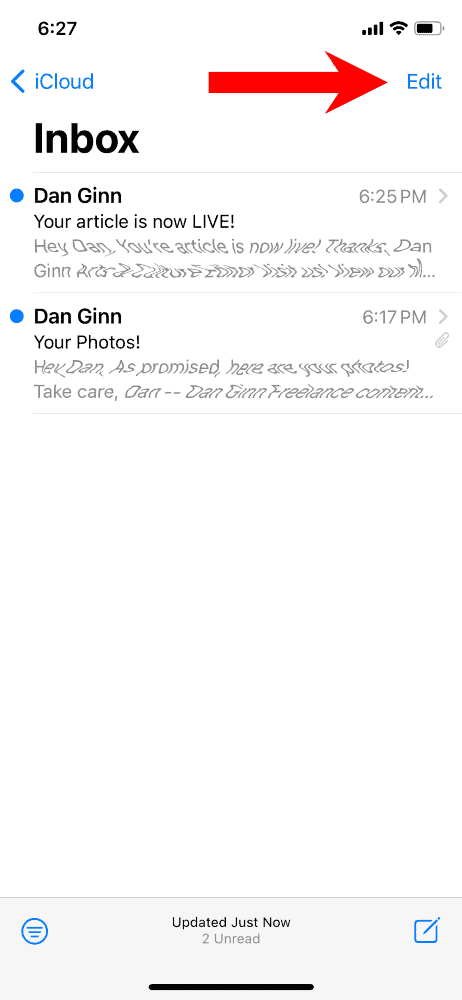
- Select the Emails You Want to Delete
Tap the emails you wish to delete. You can select multiple emails rather than deleting them individually. Next, select “trash” in the bottom right-hand corner. You can also use the Mail app’s “filter” feature to quickly locate and remove messages with large attachments that are taking up unnecessary iCloud storage space.
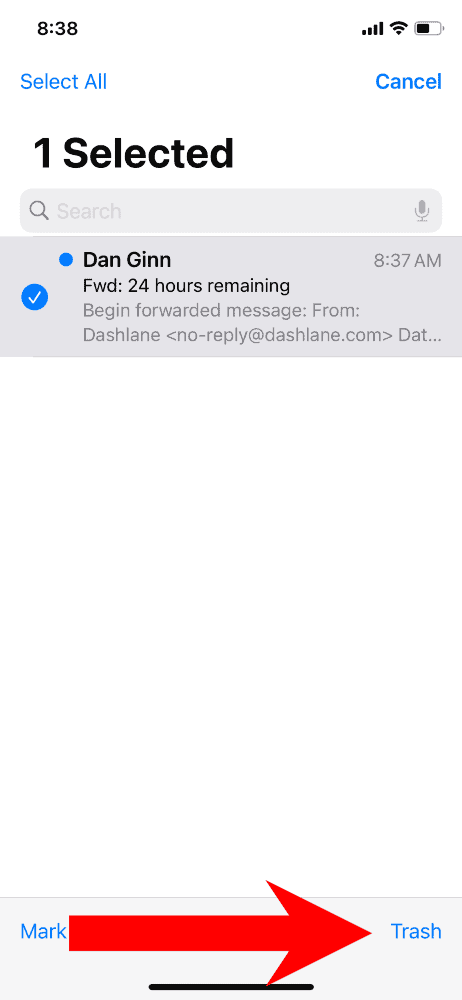
- Go to Your Trash Folder
Go back to “mailboxes” and tap “trash.” You can delete the emails again to ensure they’re no longer on iCloud.
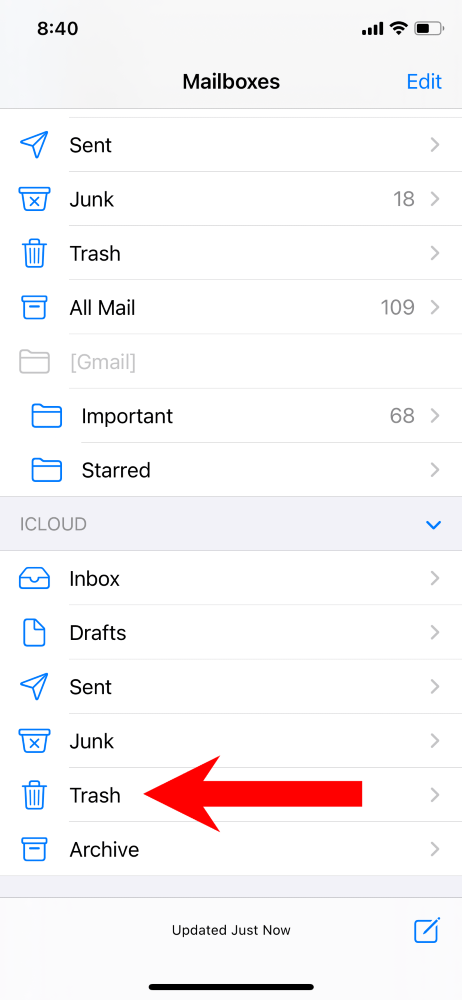
How to Delete Files in iCloud Drive
All files added to your iCloud drive contribute to your overall iCloud storage. In your iCloud drive, you may have GarageBand projects, voice memos and any other media files you added. To delete files, you need to log in to iCloud on your computer.
Next Steps: Plan for Future iCloud Backups
Now that you have manually deleted files on your iCloud, it’s time to do some maintenance for going forward. You can do this by selecting certain files to backup, as well as learning how to manage files using your system preferences.
Select Files for Your iCloud Backup
The steps below will help you select which files you want to store with your iCloud backup.
- Locate iCloud in Settings App
Return to iCloud by going to “settings” > “name” > “iCloud.”

- Toggle off Apps
Here you will see a range of apps using iCloud. Make sure to scroll to the bottom to see which third-party apps are using iCloud. If WhatsApp is toggled on, for example, it will send WhatsApp backups to iCloud. Press the button to toggle off any apps you don’t want to backup to iCloud.
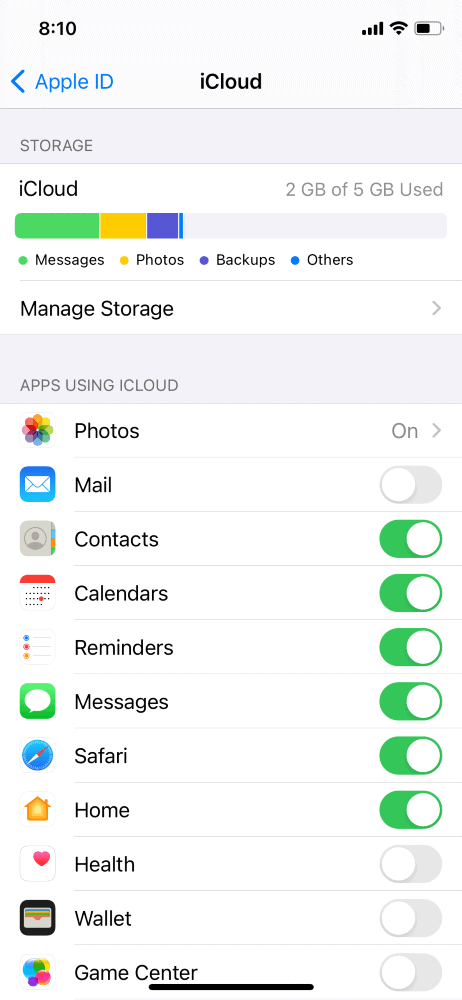
Manage Files on Your Mac Through System Preferences
You can control which files are sent to iCloud drive on your Mac computer. Mac users can disable “desktop & documents folders” syncing in the system preferences to prevent these often large folders from consuming iCloud storage space. Here are the steps to do this.
- Head to System Preferences
Tap the Apple logo in the top-left corner of your desktop and select “system preferences.”
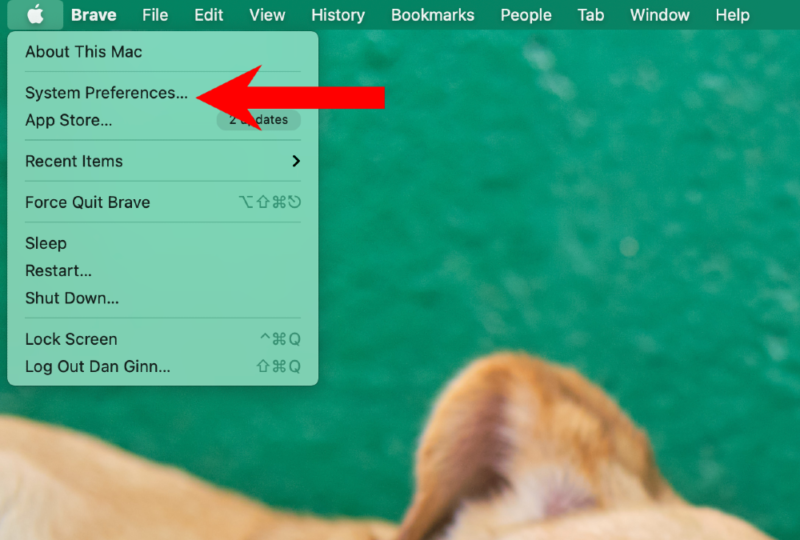
- Select “Internet Accounts” and Locate iCloud
Select “internet accounts” and locate iCloud on the left-hand side of the window.
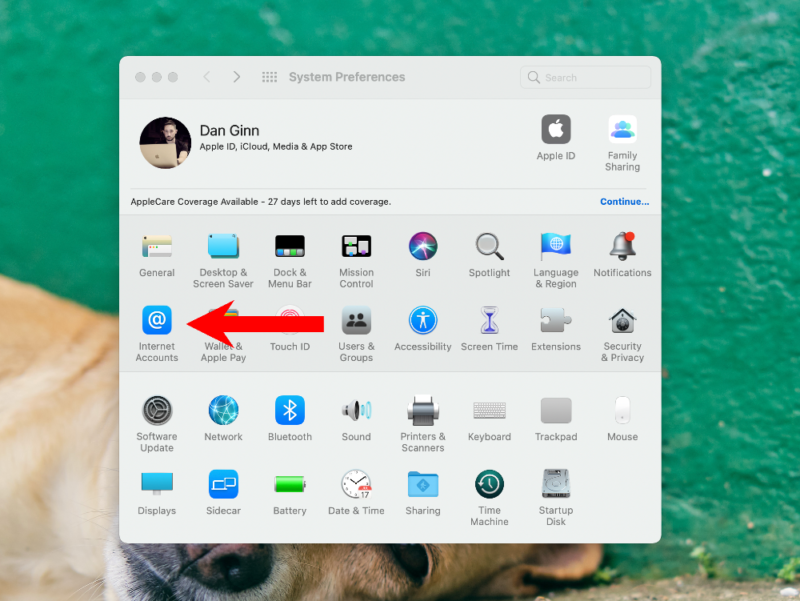
- Tap “Options” and Select Files
Now select “options,” located next to iCloud drive. On the next screen, you will see a range of applications including GarageBand and iMovie. Select which applications and data you want to backup and press “done.”
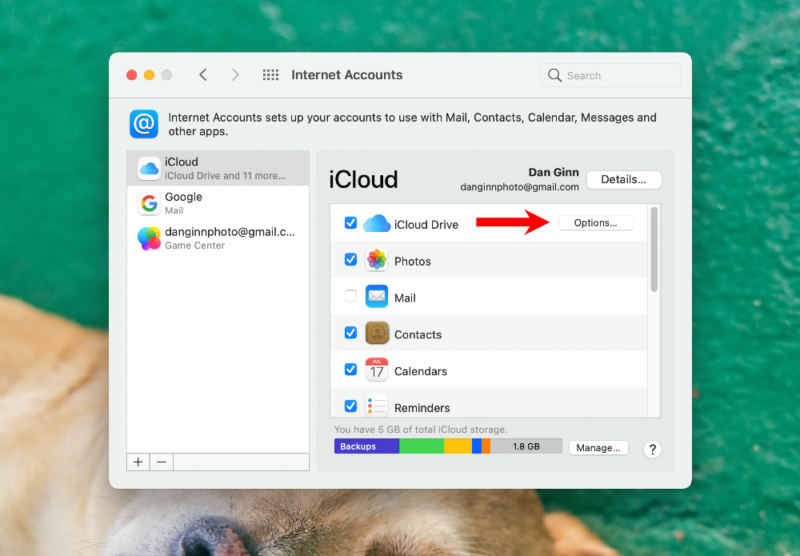
Cloud Storage Alternatives to iCloud
There are many alternatives to iCloud. Below are some of the best options available.
Sync.com
Sync.com leads the way when it comes to our favorite cloud services. It’s the best for privacy and security, with features such as zero-knowledge encryption and 365-day versioning, which is twice as long as iCloud’s 180-day recovery period. This gives you more time to recover accidentally deleted files or previous versions of important documents.
Its CloudFiles feature helps manage local storage space by keeping files in the cloud while allowing you to maintain quick access to them. This is similar to iCloud’s “optimize storage” feature but with more user control. (See our full Sync.com review for more information).
pCloud
pCloud offers incredibly good file syncing that makes managing files a breeze. Even better than the 5GB of free storage Apple offers, pCloud comes with 10GB of free storage when you open an account. Note that you’ll need to complete some steps before you can access all your free storage.
The service has added a manual “uploads” feature, accessible from both the user interface and context menu. This gives you more control over exactly what files are synchronized to the cloud compared to iCloud’s more automatic approach.
Its enhanced security features, such as biometric authentication for its Crypto folder, allow you to secure sensitive files with your fingerprint rather than typing passwords repeatedly. You can add passwords and expiration dates to shared links, or even create links that permit others to upload files to your shared folders.
pCloud also provides extended file versioning for up to 30 days, allowing you to recover previous versions of your files if needed — a feature that iCloud’s basic backup system lacks. Read our full pCloud review for more details.
Final Thoughts
The above steps should settle any concerns you may have when your iCloud is full. By trying out each step, you’ll learn that none of them are difficult nor time consuming. Plus, the benefit is that you get to save the files you want and remove the ones you don’t need. You may not even need to purchase more storage space, leaving you with more money left in the bank.
If security is a concern for your iCloud data, enable Apple’s advanced data protection feature (introduced in early 2023), which provides enhanced encryption for most of your iCloud data. While it’s not true zero-knowledge encryption like some competitors offer, it’s currently the strongest security option available for iCloud users.
Looking for alternative ways to backup? Check out our guide on how to backup iPhone to a hard drive.
Do you find that your iCloud storage fills up quickly? Did you find our step-by-step guide easy to follow? We would love your feedback, so let us know in the comments below. Thanks for reading.
FAQ
iCloud offers online storage, whereas your iPhone stores files directly on your device. For example, you may only have 5GB of free storage on iCloud, but 256GB of iPhone storage. In this instance, you’ll be able to store more files on your iPhone than in iCloud.
Apple automatically notifies you on your iPhone or iPad when your storage is full.
You can delete duplicate photos and videos to free up space. You can also delete and disable any application data that you don’t want to back up to iCloud. Remember to empty your “recently deleted” folder, as items remain there for 30 days and continue to occupy iCloud storage space.



